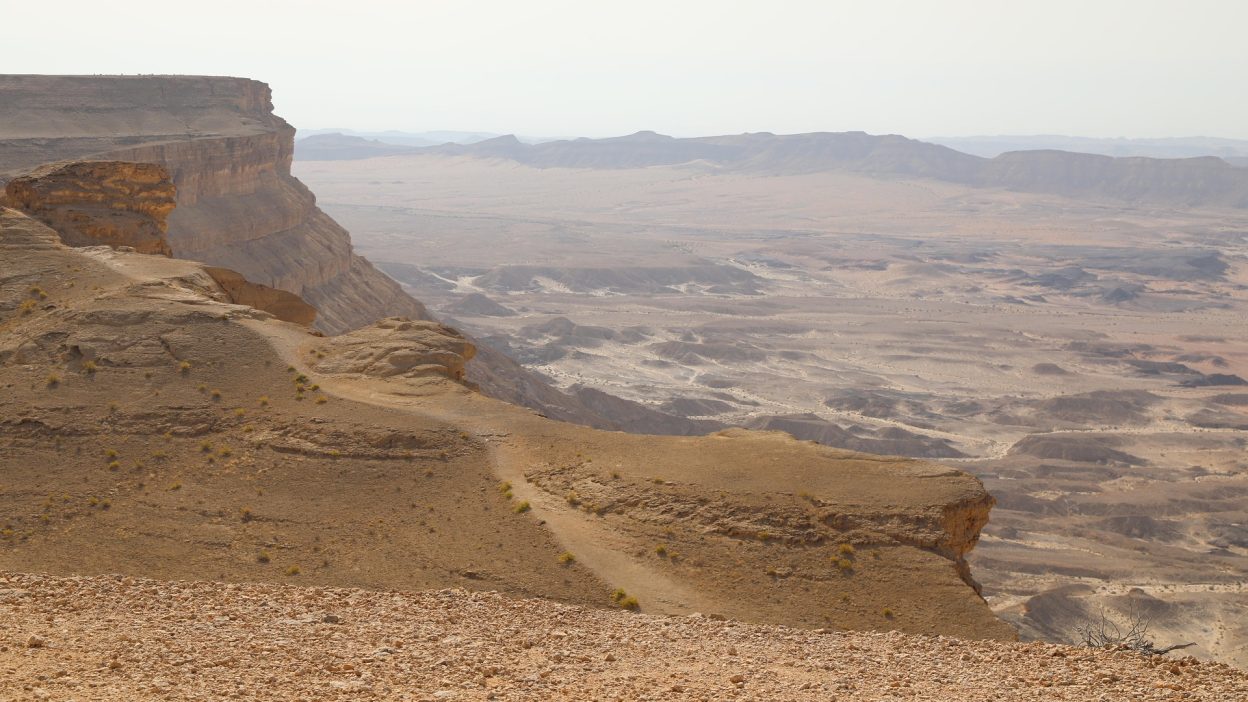One of the most infamous stories of divine wrath in religious history
The tale of Sodom and Gomorrah is one of the most infamous stories of divine wrath in religious history, deeply embedded in the cultural and moral fabric of civilizations across the world. Found primarily in the Book of Genesis (18-19), the narrative tells of two cities that were annihilated by fire and brimstone as a punishment for their wickedness. This story has not only shaped religious doctrines but has also been used as a moral warning throughout history. Despite its ancient origins, the themes of judgement, morality, and divine intervention continue to resonate, sparking debates among theologians, historians, and scientists alike.
For centuries, scholars have speculated on the nature of Sodom and Gomorrah’s sins—were they destroyed for their lack of hospitality, sexual immorality, social injustice, or a combination of these? This ambiguity has led to varied interpretations across different religious traditions, with Judaism, Christianity, and Islam all referencing the story in their scriptures. Meanwhile, modern archaeology and science have attempted to uncover whether these cities truly existed and what catastrophic event could have led to their destruction. Some researchers suggest that Tall el-Hammam, an ancient city in present-day Jordan, might be the historical Sodom, citing evidence of a sudden and extreme fire-like event, possibly caused by a meteor explosion.
The significance of Sodom and Gomorrah extends beyond religion and archaeology—it has shaped literature, art, law, and even modern socio-political discourse. The phrase “sodomy” derives from this biblical account, influencing laws and moral attitudes across the centuries. The story has been invoked in discussions about divine justice, human rights, and societal decay, often fuelling heated debates. Whether viewed through the lens of faith, history, or science, the legend of Sodom and Gomorrah remains a powerful symbol of destruction and morality, compelling humanity to reflect on the consequences of its actions.
Biblical Account of Sodom and Gomorrah
The story of Sodom and Gomorrah, as recorded in Genesis 18-19, is one of the most striking narratives of divine judgement in the Bible. According to the account, the cities had become a hub of extreme wickedness, prompting God to reveal His plan to Abraham. In a dramatic dialogue, Abraham pleaded for mercy, asking whether God would spare the cities if righteous individuals were found. In response, God agreed that if just ten righteous people lived there, the cities would not be destroyed. However, no such number was found, sealing the cities’ fate.
Two angels, disguised as men, arrived in Sodom and were taken in by Lot, Abraham’s nephew. That night, the men of Sodom surrounded Lot’s house, demanding to abuse the visitors—an act that has been widely debated in theological and historical contexts. The angels blinded the attackers and warned Lot to flee with his family before the impending destruction. As fire and brimstone rained down, consuming Sodom and Gomorrah, Lot’s wife disobeyed the divine command by looking back at the burning city and was turned into a pillar of salt.
The destruction of these cities has remained one of the most symbolic acts of divine wrath in biblical history, often cited as a warning against sin and moral corruption. The story has been referenced throughout the Old and New Testaments, with figures like Jesus (Luke 17:28-30) and Paul (2 Peter 2:6) using it as an example of divine justice. However, scholars and religious groups have long debated the exact nature of Sodom’s transgressions, ranging from inhospitality and violence to sexual immorality and societal decay. This ongoing discourse continues to influence religious teachings, ethical discussions, and interpretations of divine judgement.
Interpretations and Religious Perspectives
The story of Sodom and Gomorrah has ignited centuries of theological debate, with its meaning shifting across religions, cultures, and even political ideologies. While the biblical account is clear about the cities’ destruction, the exact nature of their sin remains controversial. Was it an issue of sexual immorality, inhospitality, social injustice, or a deeper rebellion against divine order? The answer depends on whom you ask—and the implications of that answer continue to shape laws, religious teachings, and cultural conflicts worldwide.
- Jewish Perspective: A Warning Against Injustice and Cruelty
In Jewish tradition, the Talmud (Sanhedrin 109a) paints Sodom not just as a place of sexual depravity but as a society steeped in extreme selfishness and social corruption. The people of Sodom allegedly outlawed hospitality, persecuted outsiders, and devised cruel punishments for acts of kindness—a far cry from the common assumption that their greatest sin was sexual. This interpretation challenges modern views that fixate solely on homosexuality, instead shifting the blame to greed, oppression, and moral decay. If true, this would mean that many modern societies—rampant with inequality and exploitation—mirror Sodom far more than they’d like to admit.
- Christian Perspective: A Story of Sexual Morality and Divine Judgement
Christianity has historically weaponised the Sodom and Gomorrah narrative in debates over sexual ethics, particularly homosexuality. Jude 1:7 explicitly states that the cities were punished for “giving themselves over to strange flesh”, a passage many theologians interpret as evidence of divine condemnation of same-sex relations. However, this reading has been hotly contested by progressive Christian scholars who argue that sexual violence and lack of consent—not homosexuality itself—were the true sins of Sodom. If this view is correct, then centuries of religious-based discrimination have been based on a misreading of scripture, sparking a theological crisis for traditionalists.
- Islamic Perspective: A Lesson on Disobedience and Divine Retribution
In Islam, Sodom and Gomorrah are known as the cities of Prophet Lut (Lot), and their destruction is recounted in multiple passages of the Quran (7:80-84, 26:165-175, 29:28-35). Islamic tradition aligns with the Christian view that sexual transgressions, particularly male-male relations, were central to the downfall of these cities. However, Islamic scholars also emphasise defiance against divine laws and corruption beyond just sexual misconduct. Interestingly, many Islamic-majority countries today enforce strict laws based on this interpretation, making it a living example of scripture influencing contemporary legal systems—for better or worse.
- A Broader Perspective: What If Sodom’s Real Sin Was Power Abuse?
Beyond religious interpretations, some scholars argue that Sodom and Gomorrah represent something far more universal—unchecked power leading to moral decay. The cities weren’t just immoral; they were arrogant, oppressive, and unrepentant. The Prophet Ezekiel’s rebuke (Ezekiel 16:49) states that Sodom’s sin was pride, gluttony, and neglect of the poor, a critique that applies just as well to corrupt governments, billionaires, and unethical corporations today. If so, should we really be obsessing over private morality when systemic greed and injustice are the greater threat to society?
· A Story That Never Died
The story of Sodom and Gomorrah is not just ancient history—it remains a battleground for modern debates on morality, justice, and divine punishment. Whether seen as a condemnation of sexuality, social corruption, or totalitarian control, it continues to shape religion, law, and cultural attitudes. But one thing is clear: if Sodom’s true sin was arrogance and cruelty, humanity has learned nothing—and history may be doomed to repeat itself.
Historical and Archaeological Evidence
The destruction of Sodom and Gomorrah has long been dismissed as mere myth by sceptics, yet modern archaeological discoveries suggest that the story may have a historical basis. The search for these infamous cities has led researchers to several possible locations, each with compelling evidence of a catastrophic event that could align with the biblical account. Whether viewed through the lens of faith or science, the idea that an ancient civilisation was wiped out by fire from the sky is no longer confined to religious texts—it may be an actual historical disaster.
● Possible Locations of Sodom and Gomorrah
Over the years, archaeologists have proposed various sites as the possible ruins of Sodom and Gomorrah. The most prominent candidates include:
- (1) Tall el-Hammam (Jordan) – This site has recently gained attention as the strongest contender for the biblical Sodom. Excavations have revealed evidence of a sudden, intense destruction, with pottery shards that appear to have been flash-melted by extreme heat—similar to temperatures generated by a nuclear explosion.
- (2) Bab edh-Dhra and Numeira (Near the Dead Sea, Jordan) – These ancient settlements, located along the southeastern edge of the Dead Sea, show signs of widespread fire damage and were abandoned suddenly. Some scholars believe they fit the description of “cities of the plain” mentioned in Genesis.
- (3) Southern Dead Sea Region (Israel-Palestine Border) – Some researchers theorise that Sodom and Gomorrah are now submerged beneath the Dead Sea, buried by centuries of geological activity and rising water levels.
Each of these sites presents unique clues, yet none can definitively prove they were the biblical cities. However, the overwhelming evidence of catastrophic destruction strongly suggests that something extraordinary happened in this region around 1700-2000 BCE.
● Scientific Theories on the Cities’ Destruction
While religious tradition attributes the downfall of Sodom and Gomorrah to divine wrath, scientists have explored natural explanations for such a sudden and fiery event. The most compelling theories include:
- (1) Meteor Airburst Theory – A study published in 2021 suggests that Tall el-Hammam may have been obliterated by a Tunguska-like meteor explosion around 1650 BCE. The blast would have created a superheated shockwave, instantly incinerating everything within a 25-kilometre radius. This could explain the rain of fire and brimstone described in Genesis.
- (2) Volcanic Eruption – Some scholars propose that a volcanic eruption in the region could have caused a massive firestorm, leading to the destruction of nearby settlements. However, no major volcanic activity has been linked to this timeframe.
- (3) Earthquake and Gas Explosion – The Dead Sea Rift Valley is a highly active seismic zone. A powerful earthquake could have triggered a release of natural gas deposits, igniting massive firestorms. This theory aligns with the description of fire descending from the heavens.
● The Challenge of Proving Biblical Events
Despite these fascinating discoveries, no definitive evidence has been found to prove that Sodom and Gomorrah were real cities, nor that their destruction happened exactly as described in the Bible. Archaeology and science can only go so far in verifying ancient texts, leaving the final interpretation open to faith, speculation, and further research. However, the possibility that a real-world disaster inspired the biblical story cannot be ignored. Whether divine punishment or natural catastrophe, the fate of Sodom and Gomorrah remains a chilling warning of destruction—one that still captures human imagination thousands of years later.
Theological and Moral Lessons
The destruction of Sodom and Gomorrah is more than just a story of divine wrath—it is a cautionary tale that has shaped religious teachings, ethical debates, and moral philosophy for millennia. The event is frequently referenced as a warning against disobedience, corruption, and the consequences of unchecked immorality. However, what exactly constituted the sin of Sodom has been a subject of intense debate. Was it sexual immorality, a lack of hospitality, social injustice, or something even deeper? The ambiguity surrounding the cities’ transgressions has allowed different religious traditions to interpret the story in ways that serve their moral and theological narratives.
In Christianity, Judaism, and Islam, the tale is often used to reinforce the idea that divine judgement is inevitable for those who stray too far from righteousness. Many Christian teachings, particularly in conservative circles, focus on sexual transgressions, using Sodom as an example of the consequences of moral decay. However, the Book of Ezekiel (16:49) provides a different perspective, stating that the real sin of Sodom was its pride, gluttony, and neglect of the poor. This raises a powerful moral argument: is the true warning of Sodom not about personal morality but about societal injustice, greed, and the failure to care for the vulnerable? If so, then modern societies—where wealth inequality and corruption run rampant—might be more deserving of the label “Sodom” than they realise.
The broader theological message of Sodom and Gomorrah goes beyond punishment—it is also a lesson in righteousness, mercy, and personal responsibility. Abraham’s plea with God to spare the cities if even ten righteous people were found suggests that individual morality can have a collective impact. Lot’s survival, despite his many flaws, highlights that faith and obedience can lead to salvation. At its core, the story serves as a moral mirror, forcing humanity to question its own ethical failings and whether history may one day repeat itself. If Sodom was a warning, the real question remains: is the world listening?
Cultural and Literary Influence
The story of Sodom and Gomorrah has left a profound mark on literature, art, and popular culture, becoming a symbol of divine retribution and moral corruption. Throughout history, writers, poets, and theologians have used the tale as a powerful metaphor for societal decay, excess, and divine judgement. From Dante’s “Inferno”, which places the sinners of Sodom in the depths of Hell, to John Milton’s “Paradise Lost”, where the destruction of the cities serves as a warning against rebellion, the story has been repeatedly invoked to explore themes of sin, punishment, and redemption. Even in modern literature and cinema, Sodom and Gomorrah are referenced as cautionary examples of how unchecked indulgence and moral decay can lead to catastrophic downfall.
Beyond literature, the influence of this ancient tale extends to law, politics, and social discourse. The very term “sodomy”, derived from Sodom, has been controversially used in legal systems for centuries to criminalise certain behaviours, particularly those related to sexuality. The story has also been evoked in political debates, often as a rhetorical tool to condemn perceived moral decline in societies. Even today, in discussions about justice, corruption, and divine punishment, Sodom and Gomorrah remain enduring symbols—reminders of a past catastrophe that continues to shape cultural and moral narratives in the present day.
Modern-Day Interpretations and Controversies
The interpretation of Sodom and Gomorrah in modern society is one of the most polarising and controversial debates in both religious and secular contexts. For centuries, the cities’ destruction was viewed primarily as a divine punishment for sexual immorality, particularly homosexual acts. In recent decades, however, this traditional interpretation has been challenged by more progressive voices within both religious and secular circles, arguing that the real sins of Sodom were social injustice, greed, and the abuse of power. This shift in interpretation calls into question the moral basis of laws against homosexuality that have historically been justified by the biblical account. If the sin of Sodom was about inhospitality and exploitation rather than sexual orientation, does this mean that modern anti-LGBTQ laws based on the story are fundamentally misled?
Moreover, the story of Sodom and Gomorrah is often wielded as a weapon in modern political discourse. Conservative politicians and religious groups continue to invoke it as a warning against moral decay in societies they view as increasingly permissive and tolerant of behaviours they deem sinful. At the same time, more progressive factions argue that the focus on sexuality distracts from the real moral failings of society—inequality, exploitation, and environmental degradation. In this context, Sodom and Gomorrah have transformed from a biblical tale of divine retribution into a battlefront for ideological wars over morality, justice, and the direction of modern civilisation.
Scientific Explanations for the Event
While the biblical account of Sodom and Gomorrah’s destruction paints a picture of divine wrath raining down in the form of fire and brimstone, modern science has proposed more startling and terrifying explanations for the catastrophic event. One of the most widely discussed theories is that the cities were obliterated by a meteor or asteroid impact, triggering a massive airburst explosion similar to the Tunguska event of 1908. This explosion would have released an unimaginable amount of energy, incinerating everything in its path with temperatures hotter than the surface of the sun. The impact would have caused a massive firestorm, reducing Sodom and Gomorrah to nothing but ashes, while leaving burnt pottery and evidence of extreme heat in the surrounding area. If this theory is true, the event wasn’t divine retribution but rather an earth-shattering disaster of cosmic proportions, changing the landscape in a matter of seconds.
Other scientists point to the region’s geological features and suggest that the cities may have been destroyed by a cataclysmic earthquake, triggering the release of toxic gases from the Dead Sea, where natural bitumen could have exploded in a fiery inferno. The rift valley itself, marked by constant seismic activity, could have caused tectonic shifts that violently reshaped the landscape, while fissures in the Earth released deadly Sulphur and methane, setting the cities alight. What if, instead of divine punishment, this was simply a catastrophic series of natural events—nature’s fury unleashed with no moral compass, no divine intervention, just an unstoppable force of destruction? Either theory underscores a chilling reality: the annihilation of Sodom and Gomorrah could have been as sudden and absolute as a wrathful deity’s judgement, yet may have been driven entirely by nature’s raw, terrifying power.
conclusion
The story of Sodom and Gomorrah remains one of the most enduring and controversial narratives in history, continuing to provoke debate across religious, cultural, and political spheres. Whether interpreted as a warning against sexual immorality, societal injustice, or divine wrath, its legacy serves as both a moral mirror and a political tool. In today’s world, the tale forces us to confront uncomfortable questions about morality, justice, and the impact of our actions on both society and the environment. Sodom and Gomorrah may be ancient cities, but their relevance remains shockingly modern—a stark reminder that the choices we make can have catastrophic consequences.
FAQ
1. Were Sodom and Gomorrah real cities?
While there is no definitive archaeological proof, evidence suggests that ancient settlements in the region may have been the inspiration for these biblical cities.
2. Why was Lot’s wife turned into a pillar of salt?
According to the Bible, Lot’s wife disobeyed God’s command not to look back at the destruction, and her curiosity led to her transformation as a symbol of disobedience.
3. Was the sin of Sodom only sexual?
The sin of Sodom is often interpreted as greed, pride, and inhospitality, though many traditions focus on sexual immorality, particularly homosexual acts.
4. What other explanations exist for the destruction of Sodom?
Some scientists suggest that a meteor explosion or earthquake could have caused the catastrophic event, which may have inspired the biblical account.
5. How has the story of Sodom and Gomorrah influenced modern law?
The story has influenced laws and social attitudes on sexuality, with the term “sodomy” used historically to criminalise certain sexual behaviors.
Reference:
The Discovery of the Sin Cities of Sodom and Gomorrah
Sodomites in the Bible: Historical and Cultural Contexts
Sodom and Gomorrah: Evidence that a Cosmic Impact Destroyed a Biblical City in the Jordan Valley
Sodom and Gomorrah: The Biblical Cities of Sin
After Scientists Debate Meltdown of Biblical Sodom
YT links
Buried Secrets of the Bible with Albert Lin: Sodom & Gomorrah (Full Episode) | National Geographic
Ancient Apocalypse: Sodom and Gomorrah | Full History Documentary
SODOM & GOMORRAH « As it was so shall it be » 4K Short Documentary
Sodom & Gomorrah Location, New Archaeological Discoveries, Example of Coming Judgement, Abraham, Lot




